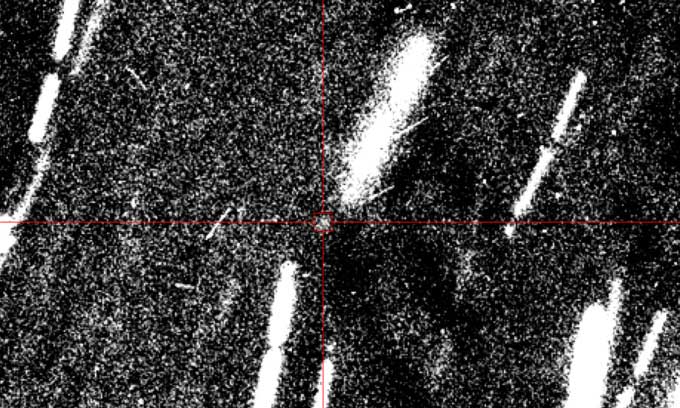The Two-Meter Twin telescope in Spain captured images of 2024 PT5, an asteroid that was gravitationally held by Earth for two months before departing on November 25.

The temporary small moon of Earth departs on November 25. (Image: Two-Meter Twin Telescope/Light Bridges/Instituto de Astrofísica de Canarias).
Earth began to pull asteroid 2024 PT5 back in on September 29, 2024. Since then, many scientists have been studying this “second moon”, including Carlos de la Fuente Marcos from Complutense University of Madrid. They knew that it would be retained for no more than a few weeks.
This prediction came true on November 25, when 2024 PT5 left Earth to return to its familiar residence in the Arjuna asteroid belt. This asteroid belt orbits the Sun in a trajectory close to Earth, averaging about 150 million kilometers from the Sun.
With a width of only 11 meters, most sky watchers could not clearly see 2024 PT5. Marcos and his colleagues studied it using the Two-Meter Twin telescope at Santa Cruz de Tenerife, Spain, operated by the Instituto de Astrofísica de Canarias (IAC). This allowed them to uncover various characteristics about the asteroid. For instance, based on its composition, it could be a fragment of the Moon that was broken off due to a collision with an asteroid.
“The farewell ‘see you later’ photo of 2024 PT5 was taken by Dr. Miquel Serra-Ricart, a member of our team, on November 25,” Marcos stated.
2024 PT5 will not be far from Earth for long. According to data from NASA’s Jet Propulsion Laboratory (JPL), this asteroid will return on January 9, 2025. At that time, it will come even closer to Earth, just 1.8 million kilometers away. However, with a speed of about 3,700 km/h, it is too fast to be gravitationally captured by Earth again. The next return is expected to occur in 2055.
“It is almost certain that 2024 PT5 will return in 2055. According to the latest data, it will have a negative total geocentric energy (necessary for gravitational capture to occur) from the end of October 6 to the beginning of October 14, 2055. However, at that point, it will still be 5.3 million kilometers away from Earth. Therefore, it will not become a temporary satellite of Earth,” Marcos explained.


















































